Have you ever felt your own vocal chords move as you’re talking? (I totally bet you just stopped and did! ?) Well, this is how you can feel the difference between voiced and unvoiced (sometimes referred to as voiceless) sounds!
Voiced sounds are ones where you can feel a vibration. On the other hand, unvoiced sounds do not make a vibration in your vocal chords.
Let’s try a few to see if you think these consonant sounds are voiced or unvoiced. (Place a hand on your neck / vocal chord area to try and figure it out!)
/b/?
/g/?
/p/?
/j/?
/f/?
/s/?
/b/, /g/, and /j/ are voiced. /p/, /f/, /s/ are unvoiced. (If you need to, go back and feel the contrast as you say the two types of sounds.)
At first, you may think “Why does it really matter if a sound is voiced or unvoiced?” But knowing the difference can really come in handy, especially when students are first learning letter sounds!
It can be helpful for more advanced students, too. For instance, labeling a consonant as voiced or unvoiced helps determine whether “s” at the end of a word makes the /s/ sound or the /z/ sound. (More on that later.)
In this post, I’ll go more in-depth on the difference between voiced and unvoiced sounds and provide the “why” behind teaching them. I’ll also name some spelling rules that go along with this concept and provide a few examples on how to teach voiced and unvoiced sounds.
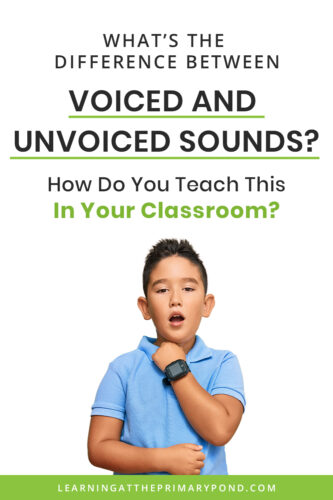
Which Sounds Are Voiced? Which Sounds Are Unvoiced?
Voiced consonants need the vocal chord vibrations to produce the sound. The voiced consonants are as follows:
- /b/, /d/, /g/, /j/, /l/, /m/, /n/, /r/, /v/, /w/, /y/, /z/
Additionally, all vowels and diphthongs (click here to read more about diphthongs!) are voiced sounds.
Unvoiced, or voiceless consonants, do not need the vocal chord vibrations to produce the sound. The unvoiced consonants are as follows:
- /f/, /k/, /p/, /s/, /t/
Examples of unvoiced digraphs are WH and CH.
However, the digraph /th/ can be a voiced digraph (as in “they”) and an unvoiced digraph (as in “thin.”) Do you hear/feel the difference between the two /th/ sounds? It’s subtle, but it’s definitely there! Some people refer to these as the “hard /th/” and the “soft /th/.”
Why Is It Important To Teach Voiced vs. Unvoiced Sounds?
As you’re working with students, you may come across students that struggle with phonemic awareness (the awareness of the sounds that make up spoken language). Not recognizing the sounds makes it difficult for students to decode words. (If you’re in need of specific ideas to help students struggling with phonemic awareness, check out this post I wrote.)
Teaching struggling students the difference between voiced and unvoiced sounds can help a ton! This provides a tangible tool. For example, think about the word “bill.” If a student is having difficulty identifying sounds audibly and only watching your lips move to identify the letter/sound, the student might think the word is spelled p-i-l-l. (Notice how your lips move when you say /b/ and /p/ – pretty similarly, right?!) However, if you teach that student to put a finger on the vocal chord when saying “bill”, he/she will recognize the difference in how the sound feels. /b/ is voiced and /p/ is unvoiced.
Voiced and unvoiced sounds can also be helpful for students who are learning English as their second language. Teaching them a concrete, physical way to hear/feel sounds can lessen confusion.
Rules That Use Voiced/Unvoiced Sounds
Rule #1: The sound of “s” at the end of a word
I bet you’ve taught the different sounds that “s” can make at the end of a word. But did you know it’s actually related to voiced and unvoiced consonants? Think about the sound “s” makes in the word “hands” vs. the word “drinks.” In “hands,” the “s” makes a /z/ sound. In “drinks,” the “s” makes the /s/ sound. There’s a reason for this!
The rule is that if a word ends with an unvoiced/voiceless consonant (f, k, p, t), then the final s says /s/. If a word ends with a voiced consonant or vowel, the final s says /z/. (The posters below can be found in my phonics program, From Sounds to Spelling.)
The exception to this is when the singular word ends in -s, -x, -z, -ch, or -sh. In these cases, you add -es to the end of the word. The -es makes the /iz/ sound, as in “foxes.”
Rule #2: The sound of “ed” at the end of a word
Let’s try the same process as above with the words “picked” and “loved.” What sound does the “ed” make in each of those words?
In “picked,” the “ed” makes the /t/ sound. In “loved,” the “ed” makes the /d/ sound. Guess what? This is also related to voiced/unvoiced consonants!
The rule is that if the “ed” comes after a voiceless consonant (f, k, p, s), then the final “ed” says /t/. If “ed” comes after a voiced consonant or vowel, it says /d/.
The exception is when the “ed” comes after the unvoiced letter “t” or “d.” In this case, the “ed” makes an /id/ sound, as in the word “spotted” or “ended.”

Activities For Teaching Voiced and Unvoiced Sounds
The very first time when I introduce voiced and unvoiced sounds is in Kindergarten. As you go through the alphabet, you might have students try to figure out if each letter sound is voiced or unvoiced. An easy way to begin is by having students hold down the /s/ sound, like a snake – ssssssss. Then, have them hold down the /z/ sound, like a zipper – zzzzzzzz. While doing so, ask students to touch their vocal chords. Ask how it feels different between the two sounds.
You might also discuss voiced/unvoiced when you work on consonant TH.
More advanced students can learn the “rules” discussed for -s, -es, and -ed.
Some ideas for activities are as follows:
- Say a sound and have students repeat the sound. Then, ask students to give a thumbs up if the sound is voiced and a thumbs down if it’s unvoiced.
- Have students complete a sort with two columns for sounds that are voiced and unvoiced.
- Using the rules listed above, have students write down words that apply to each rule (with voiced and unvoiced sounds).
Conclusion
Teaching voiced and unvoiced sounds in your classroom can be powerful! It can help clear up a lot of confusion for students who are struggling with audible sounds – as well as for students learning English.
It’s also beneficial when teaching the spelling rules for “s” and “ed” at the end of the word. Instead of memorizing which letters make each different “s” or “ed” sound, students can feel their own vocal chords to help remember. How cool is that?
Do you have any additional ideas on how you’ve taught voiced/unvoiced in your classroom? Please leave a comment below. I’d love to hear from you!
Happy teaching!
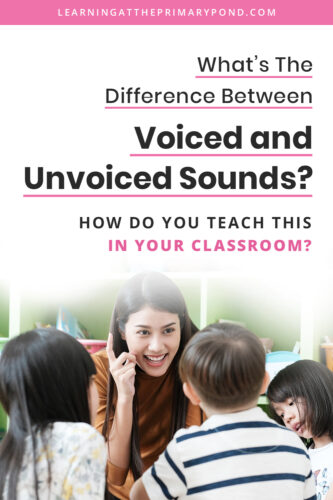



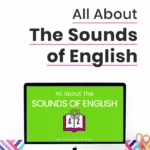

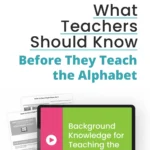
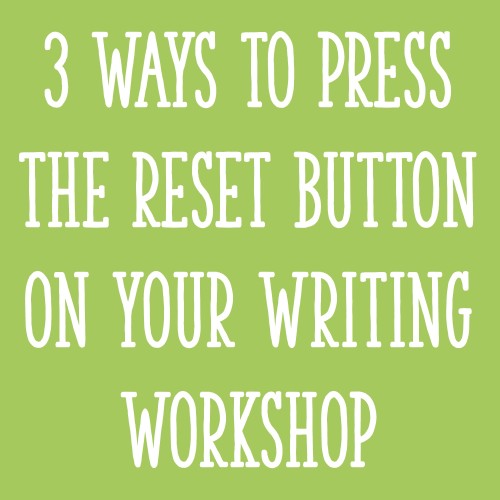








Your website is so useful. Information is concise, clear, and user-friendly! Thank you!
Thanks so much for sharing that!!
Omg, I absolutely cannot tell the difference by touching my throat. Everything vibrates! I thought the difference between those letter pairs was in the placement and tension of the tongue and lips and not in the vocal chords. Now trying to learn another language that talks about voiced, unvoiced, aspirated and unaspirated letters and I am more confused than ever. *sigh*
Glad you had an “aha” moment!
I think you need to watch video on youtube
I was looking for same kind of video
Then finally i came across a video on this topic
Which was really worthwhile usage of time and informative
As well.
I have a YouTube video on this as well, yep!
I love your class
Thanks!